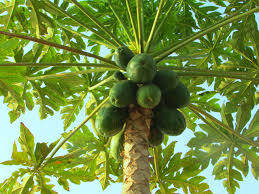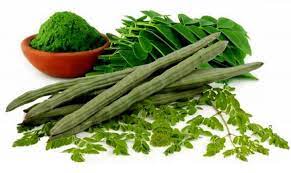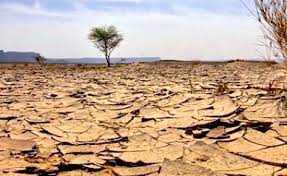
Nigerian agriculture is characterized by considerable regional and crop diversity. Analysis of this sector, particularly the food sub-sector, is fraught with serious data problems.
However, the available statistics provide a broad overview of development in agriculture upon which we can make some broad generalizations about its role in economic development and structural change in Nigeria.
In the 1960s, the agricultural sector was the most important in terms of contributions to domestic production, employment and foreign exchange earnings. The situation remained almost the same three decades later with the exception that it is no longer the principal foreign exchange earner, a role now being played by oil.
The sector remained stagnant during the oil boom decade of the 1970s, and this accounted largely for the declining share of its contributions. The trend in the share of agriculture in the GDP shows a substantial variation and long-term decline from sixty percent (60%) in the early 1960s through forty-eight point eight percent (48.8%) in the 1970s and twenty-two point two percent (22.2%) in the 1980s.
Unstable and often inappropriate economic policies (of pricing, trade and exchange rate), the relative neglect of the sector and the negative impact of oil boom were also important factors responsible for the decline in its contributions.
On its diversity, Nigerian agriculture features tree and food crops, forestry, livestock and fisheries. In 1993 at 1984 constant factor cost, crops (the major source of food) accounted for about thirty percent (30%) of the Gross Domestic Products (GDP), livestock about five percent (5%), forestry and wildlife about 1.3% and fisheries accounted one point two percent (1.2%).
Soya bean is one of the most common food crops grown and consumed in many parts of Africa. Soy bean (Glycine Max) is classified as an oilseed rather than a pulse. It is a species of legume native to East Asia (China) and still remains a major crop there till today.
Prior to its use for fermented food products, soybean was considered sacred for use in crop rotation as a method of fixing nitrogen. The bean on dry weight basis is twenty-nine percent (29%) oil, forty percent (40%) protein, thirty-five percent (35%) carbohydrate and about 5% ash. Its protein is heat stable, thus allowing it to withstand high temperature during cooking.
Though production and utilization of soy bean started in the Orient as far back as the 11th Century, this ancient crop became grown in other parts of the world just in the 20th Century. It was first introduced in Europe in the 1700s and in America in 1804 (Katz, 1998).
It was introduced to Africa from China in the late 19th Century and is now widespread across the continent including Nigeria. The earliest known cultivation of soy beans in Africa was in 1896, when they were grown in Algeria, at a government botanical station and later in 1903, when they were grown in South Africa. From 1908, there has being a dramatic and tremendous increasing interest in growing Soybean in Africa, as Europe for the first time began import large quantities of Soybean in response to severe shortages and prices of oil.
By 1982, Soybean and Soy foods, though still played a very minor role in Africa have been identified as having great potentials in arresting the declining per capital food production as well as protein and calorie consumption in the Continent including Nigeria.
Soy bean was introduced into Nigeria in 1908; it was first planted in Ibadan, Oyo State. Initially the crop was cultivated for export with the support and encouragement of Groundnut Board. Nigeria presently produces about five hundred thousand (500,000) MT of Soybean annually making it the largest producer of the product on the African continent. Soybean is a legume which is produced in most the middle belt of the country with Benue state accounting for about forty-five percent (45%) of the total production in country.
Soya Bean is a leguminous crop whose importance and economic benefits cannot be over emphasized. Products that can be gotten from Soya Bean include Soy Cake, Soy oil, Full Fat Soya, Soy meal, soy meal, soy flour, soy milk, tofu, textured vegetable protein amongst other things.
Nigeria, with a population of about two hundred million (200,000,000) is grossly underprovided with the essential food component, which is protein. For example, data from the Federal Ofiice of Statistics (FOS), central bank of Nigeri (CBN), and Food and Agriculture Organization (FAO) indicate that from cattle, less than two (2) kilogramme of beef is available to an average Nigerian per year and just mere four (4) kilogramme of eggs per annum is available to each Nigerian. In fact, milk production has been nose diving or at best has remained constant since 1994.
This scenario is compounded more so when the volume of egg supply is very low, being ten point fifty-six (10.56) grams per person per day as compared with the usual recommendation that an egg should be consumed by an adult per day. This recommendation would imply a crate of thirty (30) eggs per month. This story also holds for other meat products including, chicken.
To ameliorate this problem of low-level of protein intake, there is the need for concerted effort, among the various stakeholders to bring about the massive production of protein based food items at competitive costs so that they would be affordable to the general masses. Aside from the other necessary economic reforms, massive investment poultry farming is one way of resolving the problem.
The demand for FFS exceeds supply owing to its importance as a constituent of animal feeds all over the world e.g. Broilers eat broiler mash which must contain fifty-five percent (55%) full fat soya (FFS) to take care of animal’s energy and protein needs.
Nigeria with a population of over two hundred million (200,000,000) people is a large market for poultry, swine and fish products which automatically creates a market for the food being eaten by these animals.






















